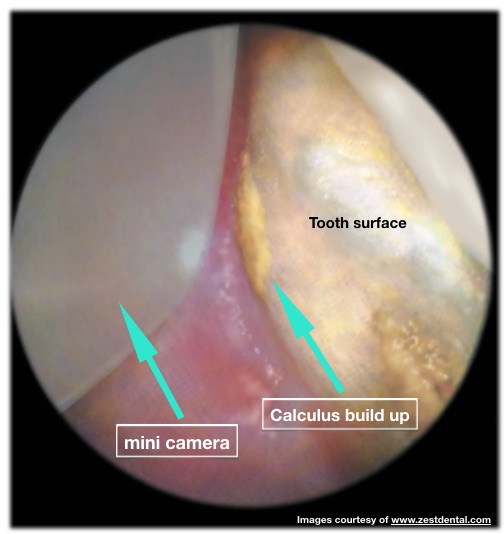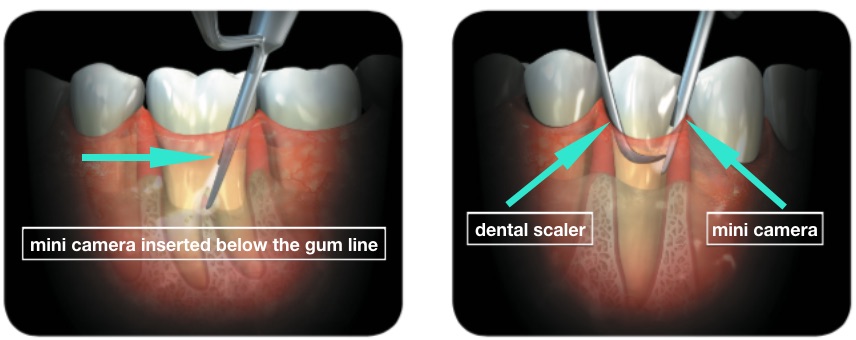There is nothing traditional about the way many dental professionals are practicing dentistry today. Technological advancements have exploded over the last decade providing dentistry with the ability to practice with more precision, predictability, and most importantly, to diagnosis and treat conditions using minimally invasive techniques. One example of this would be non-surgical endoscopic scaling and root planning as an alternative to open debridement or pocket reduction surgery for the periodontally involved patient. 
Traditionally, for the patient with periodontal disease, the course of treatment would be as follows:
- Comprehensive periodontal charting (CPE)
- A diagnosis of periodontal disease is made
- Scaling and root planing performed in areas of pocket depths 4+ mm with bleeding
- Antimicrobial solution used to irrigate / disinfect the treated “pockets”
- Re-evaluation (CPE) after 4-6 weeks of healing
- Periodontal surgery in areas persisting with 5+ mm with bleeding
In the above scenario, the outcome for this patient population is almost always surgery especially when pocket depths are in the 6+mm range. This is because traditional scaling and root planing has its limitations in teeth with deeper pockets such as a decrease tactile ability and limited vision.
One benefit of periodontal open debridement or pocket reduction surgery is enhanced visualization. Once the gum tissue surrounding a tooth with a “deep pocket” is surgically released and “flapped” back the surgeon can now see the entire root surface for the removal of any irritants remaining from traditional scaling and root planing procedures. For many years this sequence of treatment has been the gold standard for treating periodontal disease. However, emerging technologies such as the dental endoscope have provided dentistry and our patients with a non surgical alternative to treating periodontal disease.
 images courtesy of www.zestdental.com
images courtesy of www.zestdental.com
The dental endoscope is a miniature camera attached to a dental explorer designed to be placed below the gumline. It offers enhanced visualization without the need of a surgical incision. A non surgical alternative also eliminates the potential risks for post operative pain, infection, or the need for prescription narcotics. The entire procedure can be achieved under local anesthesia and has a faster recovery time.
If you have been diagnosed with periodontal disease and surgery is keeping you from moving forward with treatment than non surgical endoscopic scaling and root planing may be an alternative for you!
Shavonne Healy, MSDH, RDH, ICP is a registered dental hygienist and implant care practitioner at Kazemi Oral Surgery & Dental Implants